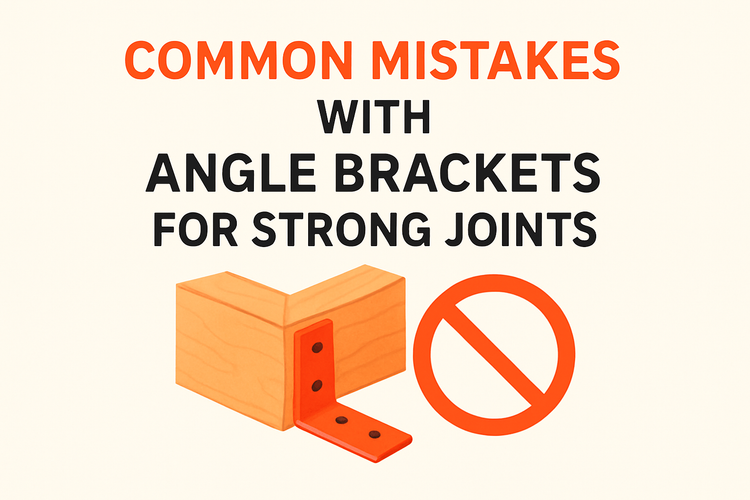Common Mistakes With Angle Brackets For Strong Joints

Not Using the Right Size Angle Bracket for the Application
Choosing the wrong size angle bracket is a frequent and easily avoidable error. Using one that's too small or too large can compromise the strength and stability of the joint.
Brackets are engineered to carry specific types of loads depending on their angle, size, and material thickness. Undersized brackets may warp under pressure, while oversized ones can create fitment or design issues, introducing unnecessary bulk. This is especially critical in structural applications involving joist hangers or post-to-beam connections, where failure can lead to safety issues or costly repairs.
Always check the manufacturer’s specifications before selecting your bracket. Brackets designed for timber joints may not serve well in metal or masonry applications, and vice versa. Matching the bracket dimensions with the materials they're securing ensures reliable, long-term support.
Incorrect Bracket Orientation During Installation
Improper positioning of the angle bracket during the installation process is another common pitfall. This can drastically reduce its effectiveness and lead to premature joint failure.
Brackets are designed with particular load paths in mind. Installing them upside down or on the wrong surface can shift stress away from the strongest parts of the bracket. This means that high loads aren't being distributed effectively, leading to weakened joints. A bracket intended for horizontal load might not be suitable for vertical tensile loads unless explicitly specified.
It’s vital to consider both load direction and the layout of your structure. Reading product documentation and checking for installation diagrams can significantly reduce errors. For larger frames and structural intersections, consulting installation best practices or using bracket-compatible systems like angle brackets and post base supports is recommended for improved anchoring.
Overlooking Fastener Compatibility and Spacing
Fasteners can’t be an afterthought when installing angle brackets. They must be compatible in both size and material.
Using nails or screws that are too long, short, thin, or thick can reduce joint integrity. In some cases, inappropriate fasteners may even damage the bracket or the surrounding material. Furthermore, improper spacing between fasteners can lead to stress concentration points or splitting in timber, particularly in softwoods. Use corrosion-resistant fasteners if angle brackets are being installed in moisture-prone areas to prolong their effectiveness.
Brackets work only as well as the fasteners used with them. Many products, especially within the angle brackets range, come with specific hole patterns designed to maximize load distribution. Following these recommendations ensures optimal performance. Pairing the right connector with the correct set of screws or bolts secures structural integrity and extends longevity.
Failing to Account for Load Types and Directions
Understanding the types of forces acting on your joint is critical before choosing a bracket. Ignoring this can lead to component failure down the line.
Angle brackets are often used in connecting vertical and horizontal elements. If you're tying together beams or posts subjected to heavy downward forces, the bracket must resist shear, bending, and possibly tensile forces. Not all brackets are suited to each type of load. Some may fare well under compression but fail under bending or lateral torsion. By comparing your application to structural load requirements, it becomes easier to choose fitting bracket styles and install them appropriately.
To improve overall system compatibility, integrate specialized products like post bases and angle brackets together. These additional reinforcements can help absorb load variances, making your joint assembly far more resilient. Be proactive during planning to avoid overloading brackets that aren't rated for the loads they’ll bear.
Inadequate Surface Preparation and Material Compatibility
Before attaching an angle bracket to a surface, it’s crucial to prepare the material and check compatibility. Failing to do so can result in weak adhesion or bracket shift post-installation.
Dust, moisture, and uneven surfaces compromise grip and can lead to improper seating of the bracket. Especially in outdoor or high-humidity environments, moisture can corrode both the bracket and fasteners, particularly if the materials are not galvanized or stainless. Material compatibility also plays a role. Some brackets are designed specifically for timber, while others are rated for concrete or steel connections. Using the wrong bracket on incompatible material can degrade performance and structural reliability over time.
Regular inspection before installation helps avoid using incompatible brackets on mixed materials. For example, pairing angle brackets with the appropriate post base solutions ensures optimal anchorage between elements. The stronger and cleaner the bonding surfaces, the more effective the joint will be.
